News
-
2 July 2024
New study on simplified probabilistic models for predicting phytoextraction timeframes of soil contaminants
Researchers at Swedish geotechnical institute and Chalmers have published an article in Environmental Science and Pollution Research.
-
28 May 2024
A study shows that in addition to contaminant stabilization, amendment with biochar and peat can increase N retention while improving microbial capacity to perform important soil functions.
-
9 October 2023
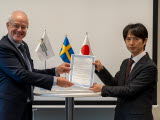
SGI collaborates with Japan on soil stabilization from a sustainability and lifecycle perspective
SGI was visited by the Port and Airport Research Institute (PARI) from October 3 to 5. During the visit, our collaboration agreement was renewed, allowing SGI to further enhance its expertise in soil stabilization.
-
4 April 2023
Researchers at SLU and Swedish Geotechnical Institute have published a study on how PFASs bind and leach in a wide array of Swedish soils. The study is published in the scientific journal Chemosphere.
-
1 February 2023
There is a high risk of landslides along the Göta River, which can affect both society and individuals. The Swedish Geotechnical Institute is working to reduce the risk of landslide along the 93 kilometer long river.
-
12 January 2023
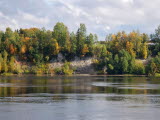
New report on landslide risks in a changing climate
SGI has mapped the risks of landslides along the Swedish river Ångermanälven. The report with maps presents a comprehensive overview of the risk of landslides in the current climate and in the climate of the future.
-
19 September 2022
Landfill sites can utilize ashes from grate-fire incineration plants for ex-situ stabilization at negative cost, thus preventing PFAS contaminated leachate waters
-
5 May 2022
Exploring the assessment of ecotoxicity in soils using batch test combined with biotic ligand models
The results indicate a strong pH-dependent toxicity of the free metal ions in the soil extracts. Using pH-adjusted Cu2+ and Zn2+ concentrations in soil extracts, the toxic responses in spiked soils and field-contaminated soils were similar. This indicates a potential for the calibrated models to assess toxic effects in field-contaminated soils. Consequently, evaluation of a standardized 0.001 M CaCl2 batch test with a simplified BLM can provide the basis for an easy-to-use tool for site-specific risk assessment of metal toxicity to soil organisms.
-
28 March 2022
Evaluation of direct or indirect methods for assessing the presence of quick clay has been evaluated
Landslides may cause severe destruction that affects both the individuals and functions vital for society. Direct or indirect methods for assessing the pres-ence of quick clay are evaluated in this study. A combined use can be used for a more cost-effective future planning and decision-making.
-
28 March 2022
Creep should be included to provide better agreement with the in situ meas-ured settlements and pore pressures
In the north part of Sweden along the Gulf of Bothnia coastline, organic fine-grained soil is the dominating soil type. Long term field measurements and model predictions suggest that creep should be included to provide better agreement with the in situ measured settlements and pore pressures.
-
28 March 2022
The charge- and concentration-dependent sorption behavior of a range of PFAS compounds in three organic soil samples has been investigated
Organic matter is a key component in soils for the sorption of per- and polyfluoro-alkyl substances (PFAS). This study investigates the charge- and concentration-dependent sorption behavior of a range of PFAS compounds in three organic soil samples.
-
28 March 2022
Intensive Cl cycling in soils
This study reveal intensive Cl cycling between organic and inorganic forms in forest humus layers, while long-term Clorg accumulation seems more linked with overall deep soil organic carbon stabilization. Thus, humus types and fac-tors affecting soil carbon storage could be used as indicators of potential Clorg formation and accumulation in soils.
-
27 October 2021
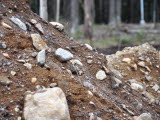
A large number of polycyclic aromatic compounds revealed
New publication that demonstrates the benefit of combining targeted and non-targeted chemical analysis with bioassay analysis to assess the diversity and effects of PACs at contaminated sites.
-
27 October 2021
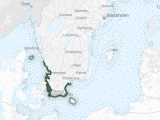
A new wave data is made available
A 40-year wave dataset, from 1979 to 2019, is made available through an open-access data portal. The wave model domain encompasses the Baltic Sea, Öresund, Kattegat, and Skagerrak.
-
27 October 2021
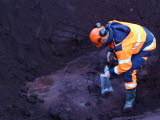
Pyrite cinder investigated using a combination of complementary techniques
This is the second publication in a study of a 60-year-old pyrite cinder deposit in Bergvik, Sweden. A comprehensive mineralogical characterization and speciation of sulfur, Pb and Zn have been carried out.
-
14 October 2021

Water levels are changing – build wisely!
We know that heavy rainfall can cause flooding along watercourses and in low-lying areas. We also know that storms can cause flooding and erosion along the coastline and that sea levels are slowly rising. As conditions change, we need to re-think our land-use practices and plan our communities to make them safe and livable for future generations as well.
-
13 October 2021
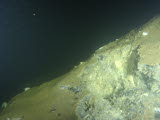
Dispersion paths for contaminated sediments investigated
Two newly published articles present the possibility of dispersion and possible dispersion pathways for contaminants from fibrous deposits.
-
3 June 2021
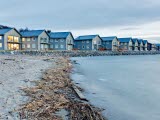
Ten national risk areas have been identified
In a new report, the Swedish Geotechnical Institute (SGI) and the Swedish Civil Contingencies Agency (MSB) have identified ten areas with climate related risks for landslide, flooding and shore erosion.

